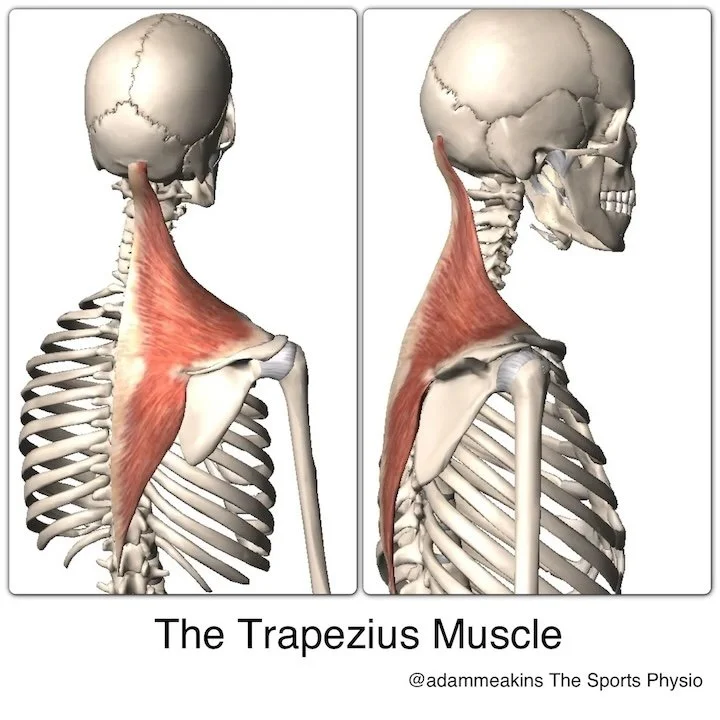Why do My Upper Traps Hurt?
By: Kelsie Mazur, DPT
Raise your hand if you deal with upper trap, neck, tension headaches, or shoulder blade pain (everyone raises their hands). Okay, now raise your hand if you’re guilty of doing countless stretches, rolling it out, scraping, cupping, and even dry needling and it’s not getting any better...
As you can see in the picture above, the upper trapezius muscle is a giant muscle spanning from the base of your skull and attaching to your middle back. It is the most superficial muscle of the back and can be a pesky spot for most of us. But this muscle is truly amazing and we need not forget to show it some TLC.
The role of the upper trapezius muscle is to elevate and upwardly rotate the scapula. That’s right, they should feel elevated. But what actually causes the pain or perception we feel while our physical therapist pushes on
this muscle or after a tough workout? Why don’t fancy modalities in my physical therapist’s toolbox free me of this pain?!
Take a look at this example: if you're a student or you have a desk job where you are in the constant ‘Hunched’ over position, typing, texting, resting your cheek on your hand daydreaming, this cycle of sitting for long periods of time contributes to the lack of muscular endurance in these positions for long periods of time, which triggers a threat response on the nervous system. I know this may sound confusing, but this “threat” is interpreted by the body as pain or discomfort from prolonged stress, which causes your muscles to respond by tightening up passively to protect it.
Similarly, if you’ve ever been rear ended or in a car accident, our bodies usually feel sore the next day, even for months after due to the muscles tensing up bracing an impact of a hit. Thus, another stress response imposing as pain.
Our upper trapezius muscles require both rejuvenation through rest and relaxation, as well as strengthening to effectively alleviate tension headaches, enhance sleep quality, and improve overall function. More importantly, a comprehensive approach, alongside your physical therapist involving stretching to lessen the hyperactivity of the sympathetic (fight or flight) nervous system, alongside targeted strengthening of the upper trapezius and other relevant postural muscles— acknowledging their interconnected function increases our body's resilience against physical loads, stress, and sustained poor postures such as forward neck and hunched shoulders, commonly associated with prolonged sitting.
Bottom line...
Tight Traps? → Stretching + Strengthening= More resilient muscles and the freedom to live without discomfort.
Here at Wattage, I am passionate about helping my patients in every way possible. To learn more about physical therapy options, performance training, or how I can help you get out of pain and back to doing the things you love, email us at Kelsie@wattagept.com today!
Check out the latest instagram post below for ways to make your upper traps more resilient.
https://www.instagram.com/reel/C8dHFpTPXxb/?igsh=MXBpMjg1Z2E2bGxpag==

